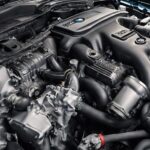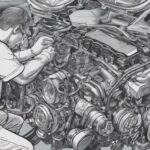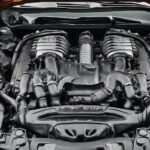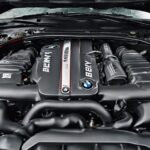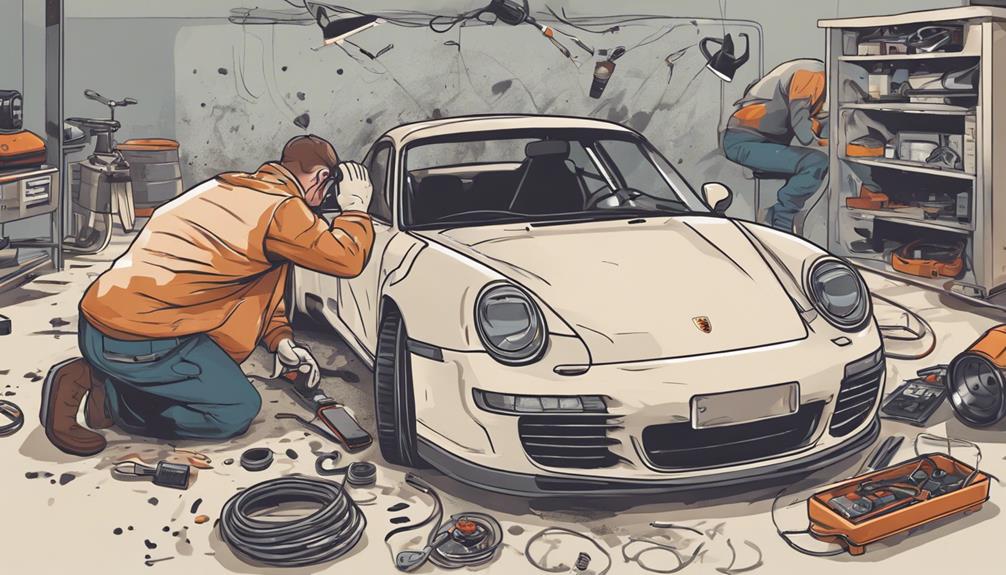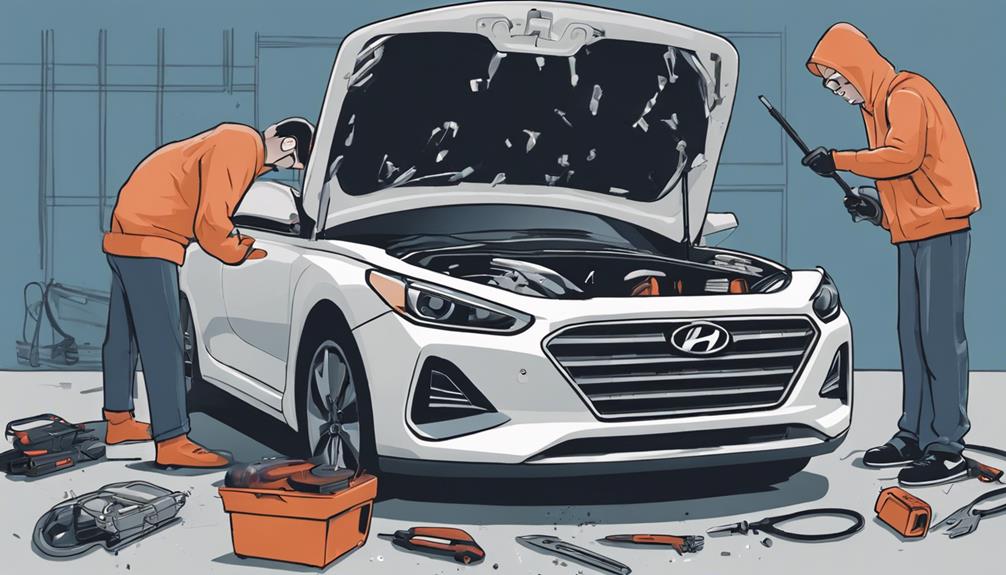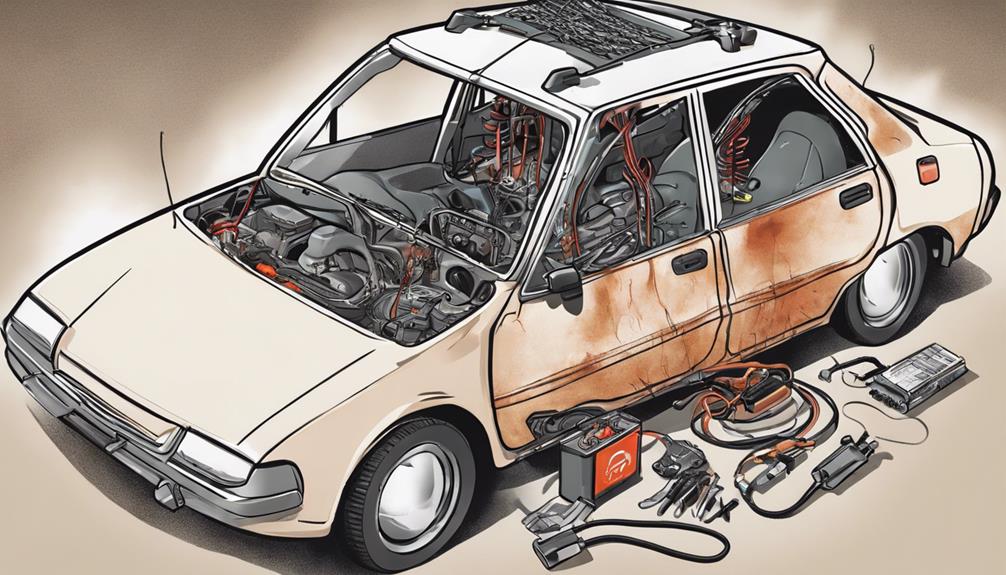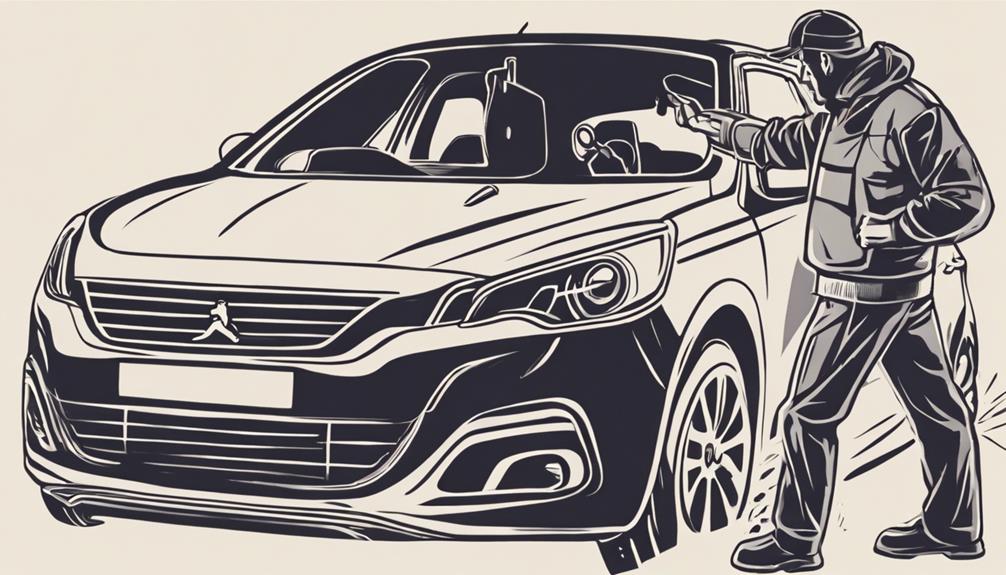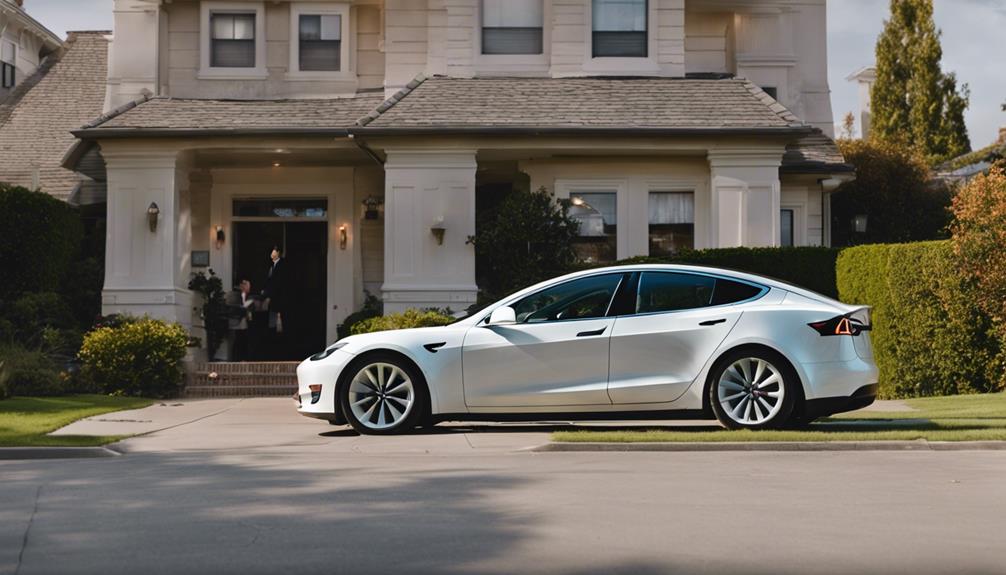If your Porsche won't start, it could be due to various reasons like a dead battery, starter motor failure, or a faulty ignition switch. Start by checking your battery voltage, inspecting terminals for corrosion, and ensuring a secure battery placement. Make sure the clutch switch and pedal are functioning correctly, test the voltage to the starter, and troubleshoot any issues with the starter motor. Verify key recognition, check dashboard warning lights, and inspect wiring connections for any electrical faults. If you want to get your Porsche up and running smoothly again, addressing these issues promptly is key.
Key Takeaways
- Check battery voltage and connections for proper function.
- Inspect clutch switch and pedal alignment for starter engagement.
- Test voltage to starter motor to diagnose issues.
- Verify key and immobilizer system function.
- Address wiring and electrical faults promptly.
Common Causes of Porsche No-Start
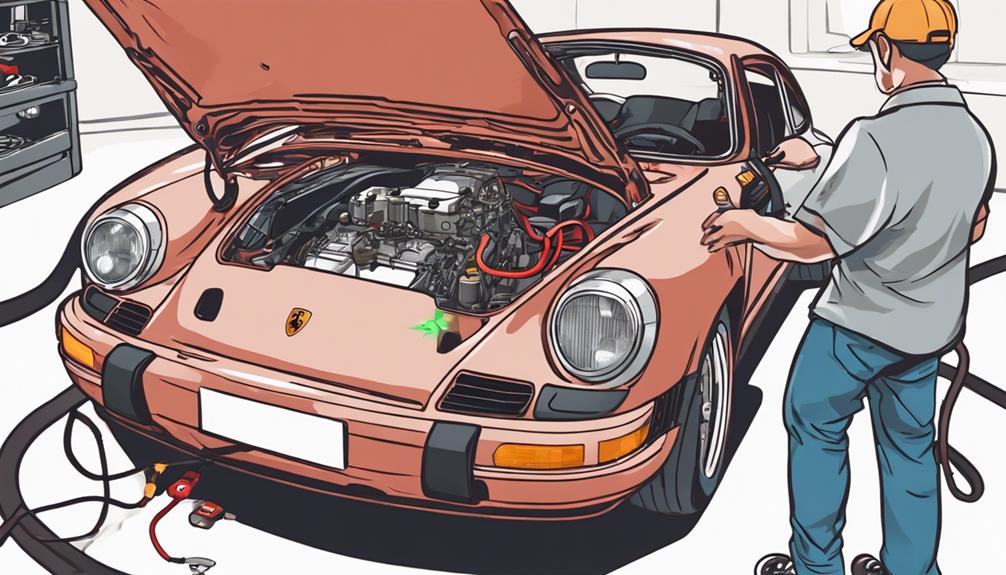
If your Porsche won't start, a dead or weak battery is often the culprit, causing frustration and delays in your driving plans. Picture this: you're all set to hit the road, the engine purring with anticipation, but as you turn the key, all you get is a disappointing click or complete silence. No need to panic just yet; it might just be your battery playing tricks on you. The battery provides the necessary power to kick-start your Porsche's engine, and if it's not up to the task, well, you're stuck.
On the flip side, if your battery is in top shape, the starter motor could be the troublemaker. This little gadget is responsible for getting the engine going by cranking it up. If it's faulty, you might find yourself in a stand-off with your Porsche, each waiting for the other to make the first move.
Checking the Battery and Connections
Ensuring the battery and connections are in peak condition is essential for resolving Porsche starting issues efficiently and effectively. Here's a quick rundown to help you get that beloved Porsche roaring back to life:
- Check Battery Voltage: Grab a multimeter and measure the battery voltage. Aim for a reading between 12-13 volts; anything lower might spell trouble for your Porsche's ignition system.
- Inspect Connections: Corrosion and loose terminals can be sneaky culprits in preventing a smooth start. Give those connections a thorough once-over to rule out any hindrances.
- Secure the Battery: Make sure your battery is snugly secured in place. You don't want it jostling around and causing a ruckus when you turn the key in the ignition.
Inspecting the Clutch Switch and Pedal
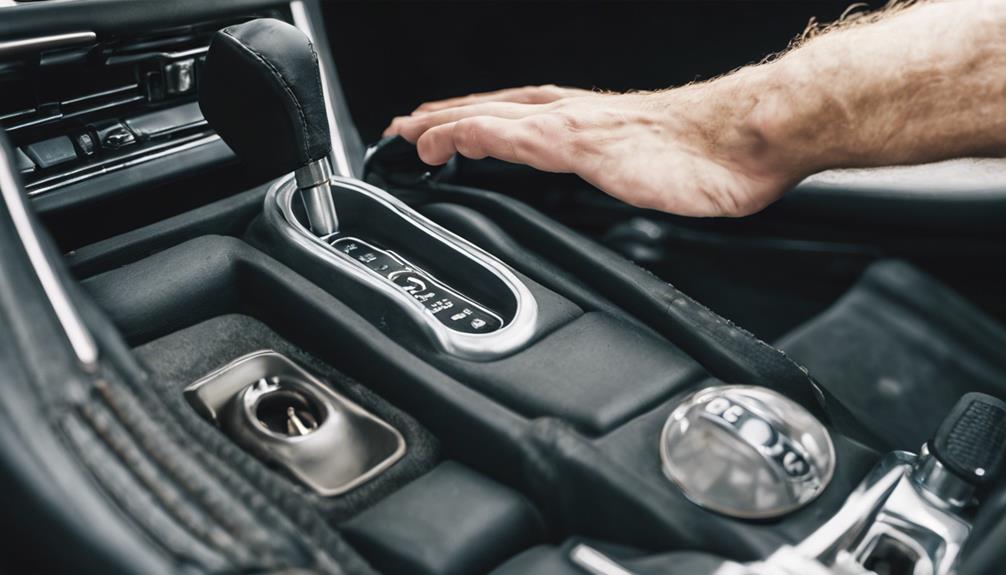
When troubleshooting your Porsche's starting issue, the clutch switch and pedal play a vital role in guaranteeing the engine fires up smoothly.
Inspecting the clutch switch involves confirming its proper functionality, while checking the pedal movement ensures it engages the switch effectively.
Common issues like a faulty switch or obstructed pedal movement can be the sneaky culprits behind your Porsche's refusal to start.
Clutch Switch Function
Inspecting the clutch switch and pedal in your Porsche involves ensuring proper functionality and checking for any signs of sticking or damage. Here's what you need to know:
- Clutch Switch Significance: The clutch switch is an important safety feature that communicates with the starter relay to engage the engine only when the clutch pedal is fully depressed.
- Functionality Check: Confirm the clutch pedal is fully engaged to allow the clutch switch to signal the starter. Any issues here could disrupt the starting process.
- Faulty Clutch Switch: If the clutch switch is defective, starting problems may arise, requiring a replacement to restore proper functionality. Remember, a smooth clutch switch operation is key to getting your Porsche up and running without a hitch.
Pedal Movement Inspection
To make certain your Porsche starts smoothly, explore the intricate dance between the clutch switch and pedal with a thorough inspection of their movement. When checking the clutch switch, guarantee it engages correctly when the pedal is pressed, sending the signal to the starter system. Simultaneously, inspect the clutch pedal for any hindrances that may impede its full engagement of the clutch switch. Look out for signs of wear or damage on the clutch switch that could affect its functionality. Additionally, confirm that the clutch switch and pedal are properly aligned and adjusted for best starting performance. A harmonious interaction between these components is essential for a seamless start-up experience.
| Clutch Switch Examination | Clutch Pedal Examination |
|---|---|
| Check functionality | Look for obstructions |
| Verify signal transmission | Guarantee full engagement |
| Inspect for wear or damage | Confirm alignment |
| Properly align and adjust | – |
| Ensure seamless starting | – |
Troubleshooting Common Issues
Facilitate a smooth start-up by troubleshooting common issues related to the clutch switch and pedal in your Porsche. Here's how to tackle the problem:
- Inspect the clutch switch: Confirm it's operating correctly to rule out any starting issues caused by a faulty switch.
- Check the clutch pedal: Ensure it moves freely without any obstructions that could prevent the car from starting.
- Verify voltage to the starter: Validate that the clutch switch and pedal are working by checking the voltage reaching the starter. This step can help diagnose if the starting problem lies with a bad starter or starter solenoid.
Addressing these issues promptly can get you back on the road in no time!
Testing Voltage to the Starter
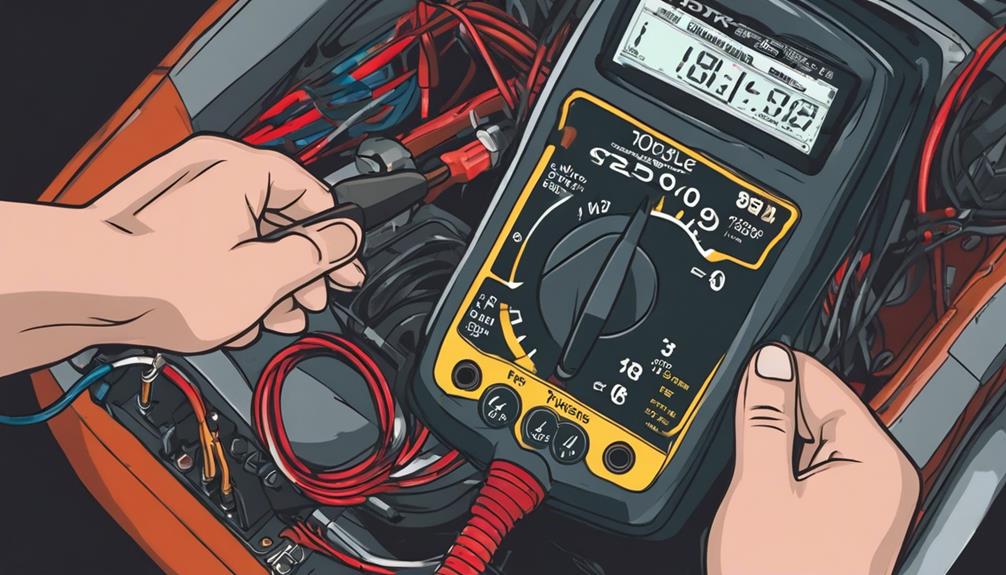
When testing voltage to the starter, you're basically playing electric detective.
You're on a mission to uncover the truth behind your Porsche's stubborn refusal to start.
It's time to whip out your multimeter and chase down those elusive electrical gremlins!
Voltage Testing Procedure
Measure voltage to the starter using a multimeter to guarantee an efficient electrical connection, a critical step in diagnosing Porsche starting problems. Here's how to proceed:
- Connect the positive lead of the multimeter to the positive terminal of the battery and the negative lead to the starter terminal.
- Make sure the vehicle is in park or neutral with the parking brake engaged before testing voltage to the starter.
- Check for a voltage reading of at least 12 volts at the starter terminal during the cranking process.
Interpreting Voltage Readings
To grasp the health of your Porsche's electrical connection, simply glance at the voltage reading at the starter terminal during the cranking process. A reading of 12-13 volts indicates a robust connection, ensuring your starter receives ample power to kick your engine into gear.
However, if the voltage dips below 11.5 volts, it may hint at a weak or dying battery that needs attention – be it a recharge or a replacement. Utilize a multimeter or a jump starter to accurately measure the voltage, pinpointing any issues with the battery or starter.
Troubleshooting Starter Issues
For a Porsche that won't start, troubleshooting starter issues by testing voltage to the starter is vital to pinpointing potential electrical connection problems efficiently. Here's a breakdown to guide you through the process:
- Check Voltage: Use a multimeter to test the voltage reaching the starter. Anything below specifications could indicate starter circuit issues.
- Evaluate Components: Assess the starter circuit components for any signs of damage or corrosion that might be impeding the flow of power to the starter.
- Ensure Proper Power: Essential voltage is necessary for the starter motor to initiate the cranking process. Testing voltage at the starter provides valuable insights into the overall health of the electrical system related to starting your Porsche.
Troubleshooting the Starter Motor
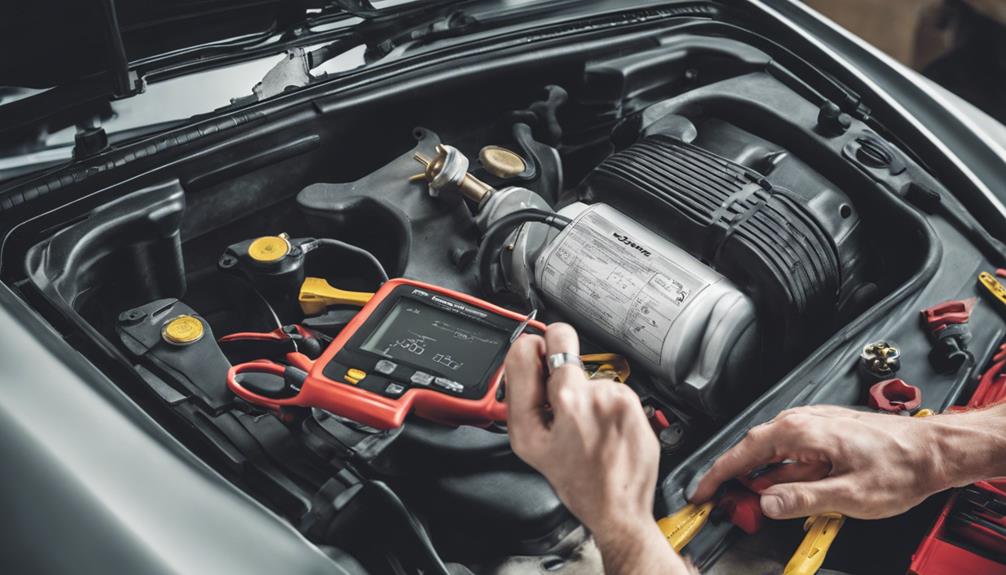
Curious about why your Porsche is declining to start? Let's explore troubleshooting the starter motor to uncover the root of this issue.
When you hear clicking sounds upon attempting to start your Porsche, it's often a telltale sign that the starter motor might be causing trouble. To begin your investigation, test the voltage at the starter solenoid to confirm that the starter motor is receiving the required power.
Check the starter relay and wiring connections meticulously for any faults that could be hindering the starter motor's operation. Make sure to verify that the voltage reaching the starter motor falls within the normal operating range for ideal functionality.
Addressing any issues promptly will help ensure that your Porsche starts reliably whenever you need it to. So, grab your tools, roll up your sleeves, and let's get that starter motor back in excellent shape to kickstart your Porsche's engine with ease!
Key and Immobilizer System Check
When troubleshooting your Porsche's starting issues, a crucial step involves conducting a thorough check of the key and immobilizer system for any potential faults. Here's what you need to do:
- Verify Key Recognition: Confirm that the key is being recognized by the vehicle's immobilizer system. If there are any issues with recognition, it could lead to starting problems.
- Dashboard Warning Lights: Check if there are any warning lights on the dashboard related to the immobilizer system. These lights can provide valuable clues about the system's status.
- Key Fob Signal: Ensure that the key fob battery isn't depleted and is sending signals properly. A weak or dead battery can prevent the fob from communicating effectively with the immobilizer.
Addressing Wiring and Electrical Issues
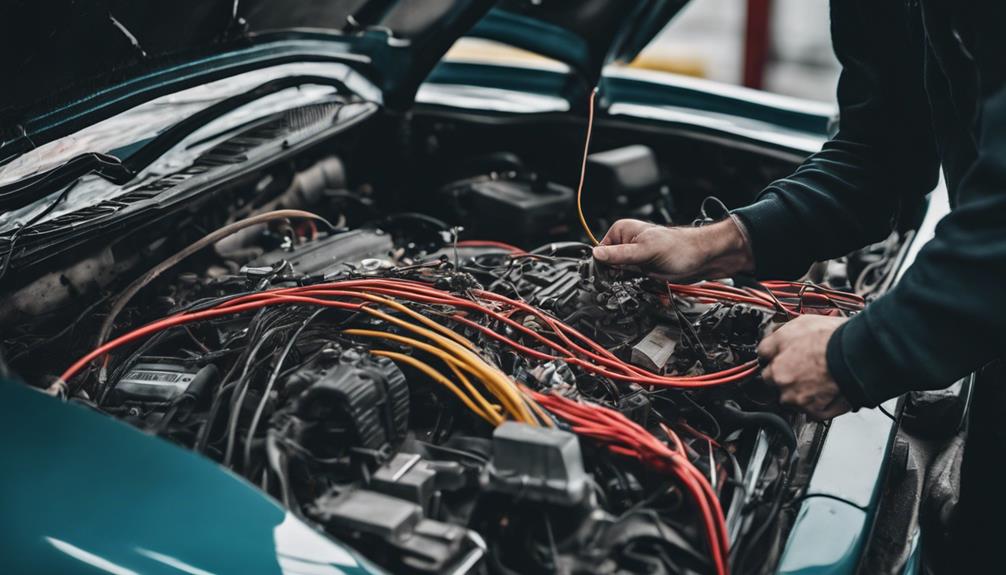
To tackle the wiring and electrical issues affecting your Porsche's starting system, start by thoroughly inspecting for loose or corroded connections that could disrupt the flow of electricity. Wiring connections play a pivotal role in ensuring that the electrical circuits function seamlessly.
Check the condition of the wiring harness for any signs of damage or wear, as these can lead to intermittent connectivity problems. Testing the continuity of electrical circuits is essential to identify any breaks or faults in the wiring that may be causing your Porsche not to start.
Additionally, verifying proper grounding of electrical components is necessary to guarantee reliable operation. Promptly addressing any electrical issues is key to preventing further damage to the vehicle's electrical system.
Seeking Professional Diagnosis and Help
Considering the complexity of Porsche's starting issues, seeking professional diagnosis and assistance is essential for accurate identification and efficient resolution. When dealing with a Porsche that won't start, here's why turning to experienced technicians is your best bet:
- Expert Diagnosis: Qualified professionals have the expertise to navigate the intricate systems of your Porsche, pinpointing the exact cause of the starting problem efficiently.
- Specialized Knowledge: Professional service centers offer specialized knowledge and access to manufacturer-recommended solutions tailored to your Porsche's specific needs.
- Diagnostic Tools: Professionals are equipped with proper diagnostic tools and resources, ensuring a precise diagnosis and swift resolution to get your Porsche back on the road in no time.
Relying on the skills of experienced technicians not only saves you time and effort but also guarantees that your Porsche receives the top-tier care it deserves. So, when in doubt, trust the pros to rev up your Porsche's engine once more.
Frequently Asked Questions
Why Is My Porsche Not Starting?
Wondering why your Porsche won't start? Possible culprits include a dead battery, faulty starter motor, fuel system issues, bad ignition switch, or spark plug problems. Don't fret! Diagnostic steps like checking voltage can help pinpoint the problem.
What Would Cause My Car to Suddenly Not Start?
If your car suddenly won't start, it could be due to a dead battery, faulty starter motor, fuel system issues, bad ignition switch, or a faulty spark plug. Don't fret; there are fixes available!
How Do You Fix a Car That Struggles to Start?
To fix a car that struggles to start, first, diagnose the issue by checking the battery, starter motor, fuel system, and ignition components. Address any wear or damage, test for proper operation, and rule out faulty electrical components.
Why Does My Car Do Nothing When I Try to Start It?
When your car does nothing on start-up, check the battery, starter motor, fuel system, ignition switch, and spark plug. A dead battery, faulty starter, or clogged fuel system could be the culprit. Time for some detective work!

